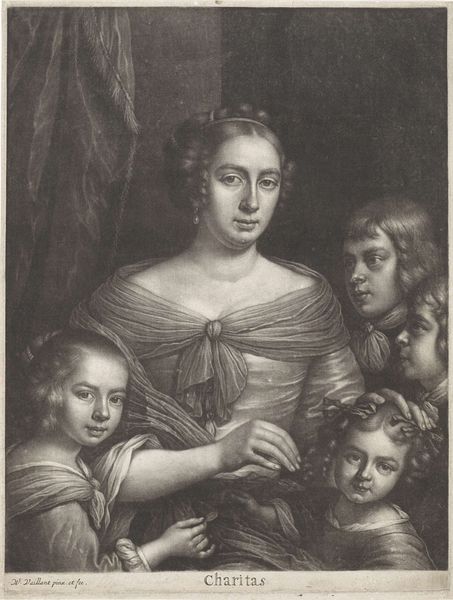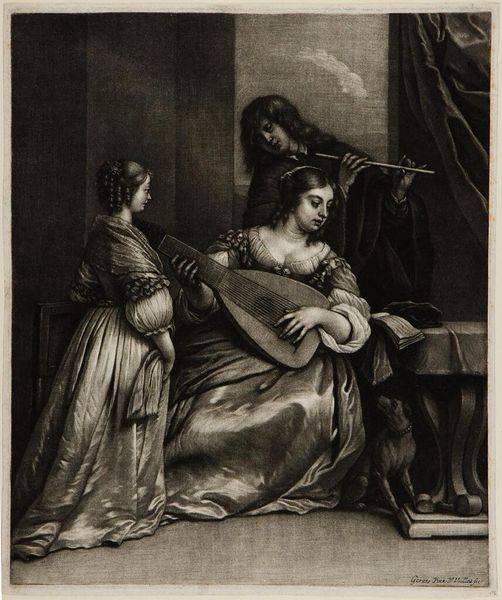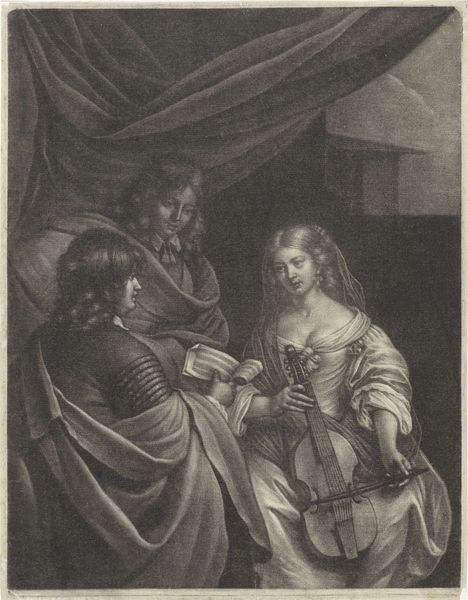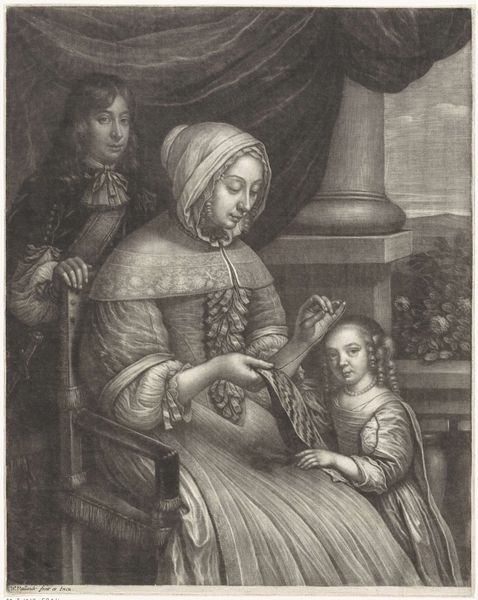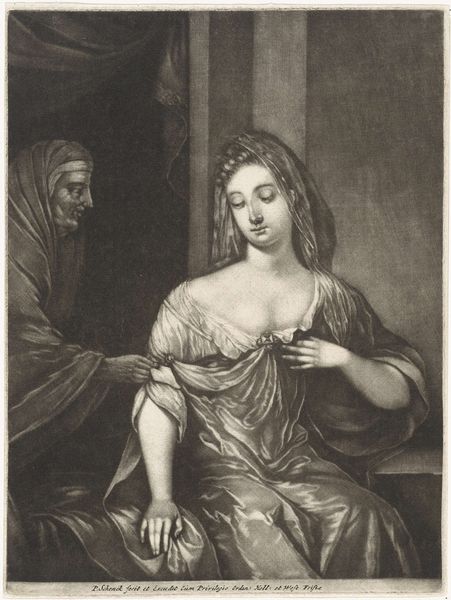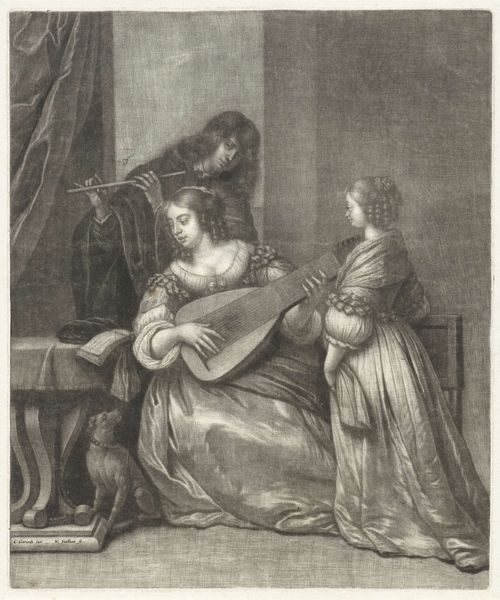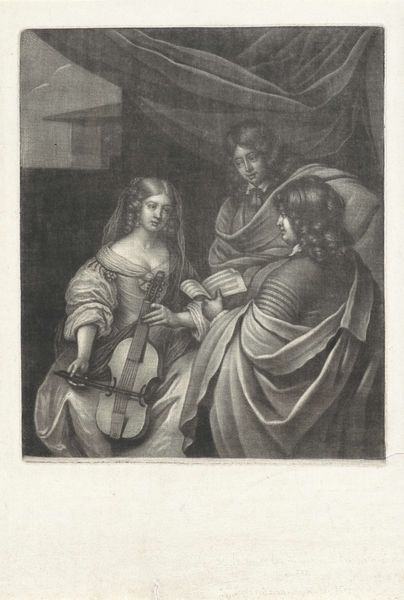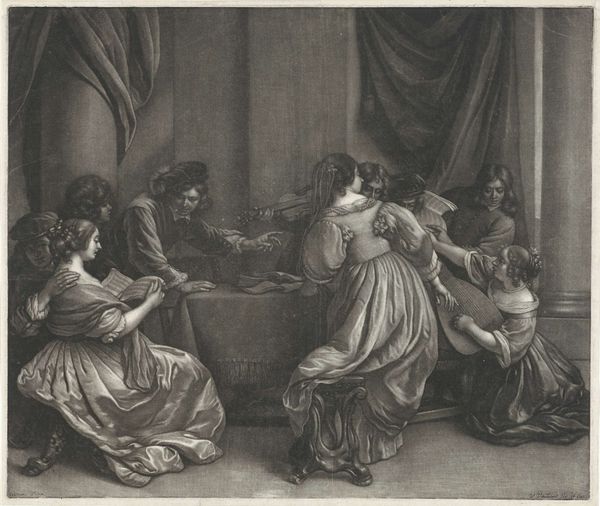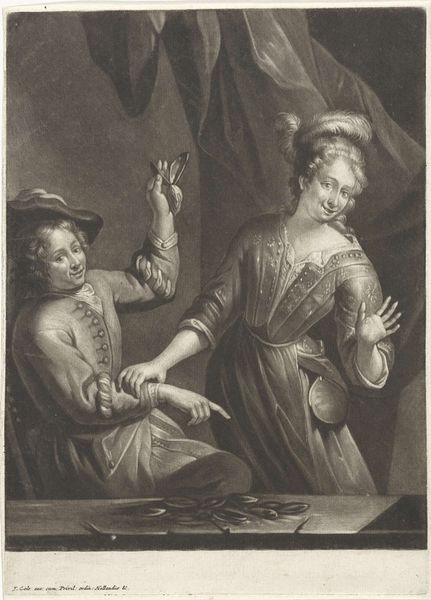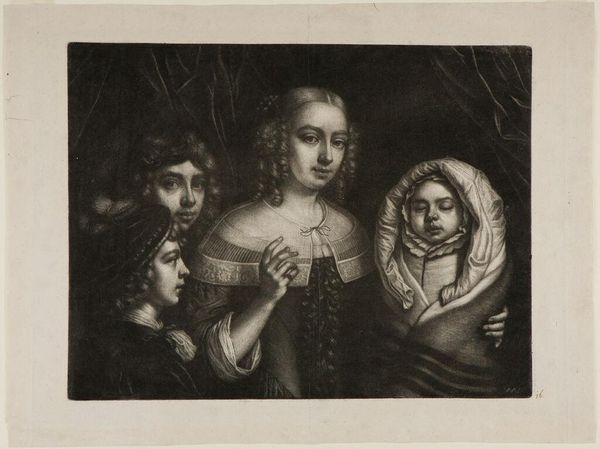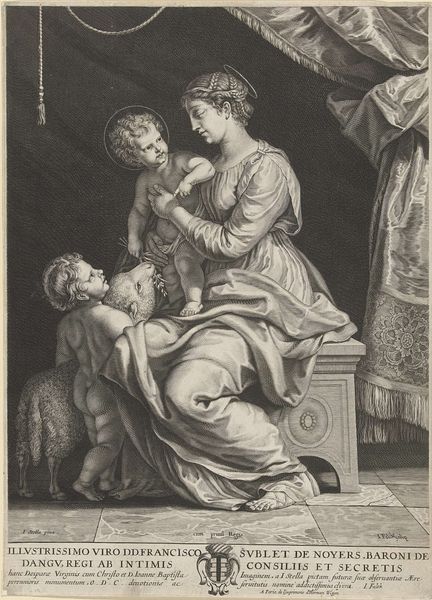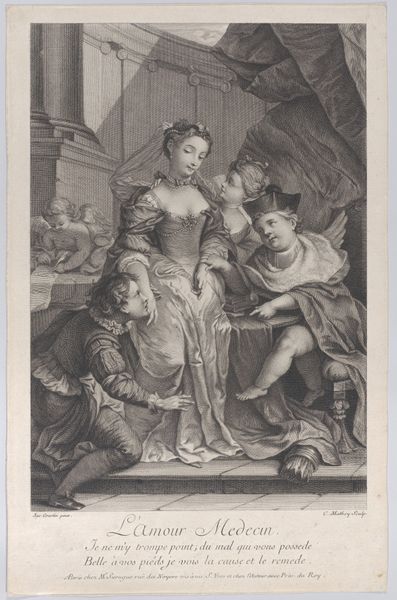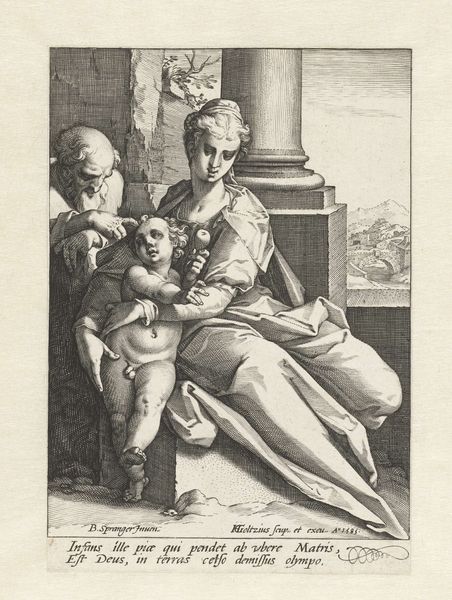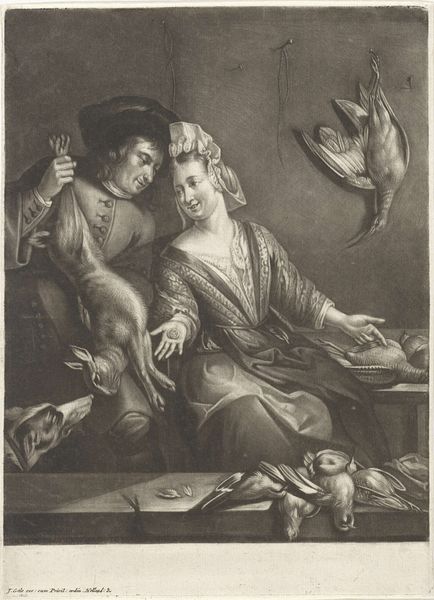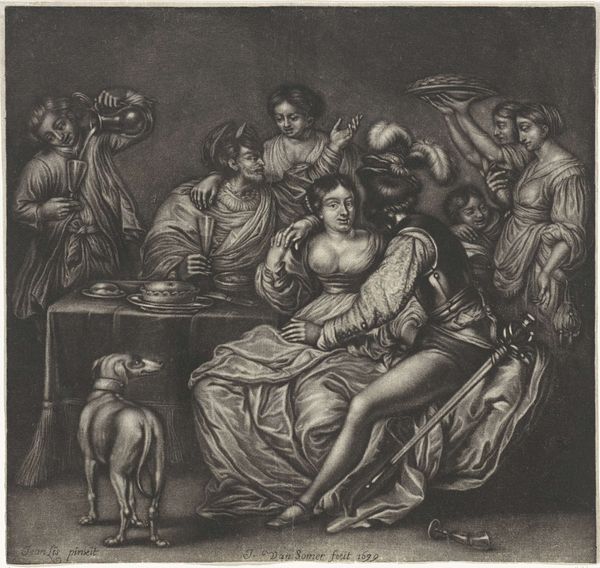
painting, oil-paint
#
narrative-art
#
baroque
#
painting
#
oil-paint
#
figuration
#
chiaroscuro
#
history-painting
#
italian-renaissance
Copyright: Public Domain: Artvee
Curator: Looking at this canvas, I am struck by the unsettling contrast—the lavish fabrics of Salome's gown against the macabre detail of the severed head. Editor: It's certainly a compelling arrangement. This piece is "Salome with the Head of Saint John the Baptist" by Guido Reni, painted sometime between 1639 and 1642. The oil painting vividly renders the infamous biblical tale. Curator: Reni captures a chilling tableau. Salome appears almost disengaged, presenting John's head, the color drained and lifeless. Is it revulsion, triumph, or simply indifference that veils her face? Her gaze avoids the object of her request, loaded with the gravity of cultural memory. Editor: The artist really directs our attention through a sophisticated deployment of chiaroscuro, enhancing the dramatic intensity. The carefully distributed light accentuates Salome's face and upper body while receding into the darker background, contributing to the dramatic impact of the composition as a whole. Curator: Indeed. The symbols speak volumes: the platter, an instrument of service transformed into one of death; Salome herself, an embodiment of seductive power capable of eliciting irreversible action. One can observe a powerful cultural shift and see echoes of the femme fatale myth resonating through time, a dangerous combination of beauty and calculated cruelty. Editor: From a compositional angle, observe the classical symmetry; the orderly arrangement gives structure but also provides an artificial counterpoint to the chaotic subject. Consider, too, the formal lines connecting all of the heads and focusing on a single narrative apex. Curator: The rendering itself, though precise, is fraught with tension. It leaves you contemplating the complex interplay between personal desires and the weight of collective, even biblical, narratives. Editor: I agree completely. "Salome with the Head of Saint John the Baptist" confronts us not just with an act of violence, but how this singular moment reveals broader and ongoing considerations of history and artistic depiction.
Comments
No comments
Be the first to comment and join the conversation on the ultimate creative platform.
